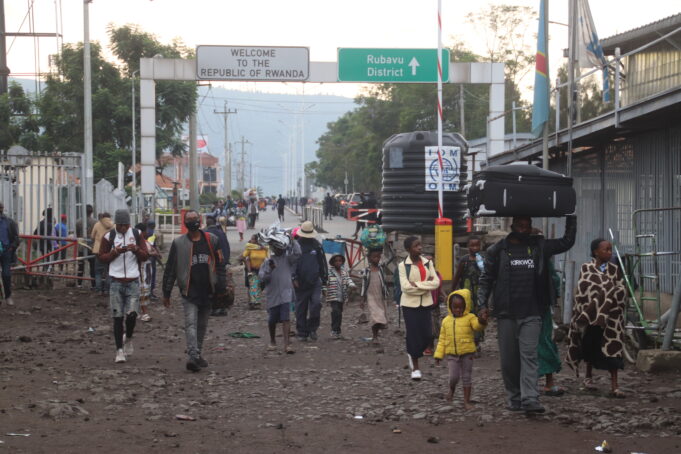(GIN)—An erupting mountain of fiery red flames from one of the world’s most active and dangerous volcanoes shook residents of the city of Goma, Democratic Republic of Congo, sparking a panicked exodus by thousands to neighboring Rwanda.
A din of people and honking horns could be heard in videos taken early May 23 of the red-glowing eruption shared on social media. More than 3,500 Congolese people sought refuge across the border in Rwanda, officials said.
Although the country’s government said that an evacuation plan had been activated, the official announcement came hours after the sky turned a fiery red, the Associated Press reported, after many had already taken it upon themselves to flee.
Fifteen deaths have been confirmed but the number is expected to rise as officials reach the hardest-hit areas. More than 170 children are feared missing and 150 separated from their families, according to UNICEF.
Local journalists reported the still-smoking molten rock reached the city’s airport but stopped just short of the outskirts of Goma, a picturesque lakeside city that is eastern Congo’s hub for trade and transport, averting greater disaster.
The last eruption in January 2002 with swift-moving lava and its accompanying carbon dioxide fumes left hundreds dead and more than 100,000 homeless.
Back in March, increased volcanic activity and other indicators had experts at the Goma Volcano Observatory (OVG) worried that another eruption could be on the way.
But after the World Bank declined to renew a four-year, $2 million funding program saying the OVG “lacked experience” and amid embezzlement allegations, volcanologist Honore Ciraba and colleagues at the Goma Volcano Observatory (OVG) said they were struggling to make even basic checks while lacking an internet connection.
“If we don’t do regular measurements and announce the eruption a few days beforehand, the population won’t have time to evacuate and people will die,” said Mr. Ciraba, 65, who’s devoted his life to trudging up the 3,470m cone to study its activity.
Volcano expert Robin George Andrews said, one of the reasons Nyiragongo is so dangerous is that its lava is very fluid and fast, so fast that it can catch up to speeding cars. Volcanoes in this region also “belch out” a lot of carbon dioxide, he said, which sinks downslope and kills anyone engulfed by it, he said.
Hundreds of houses have been destroyed and according to CNN, five schools have been decimated. At some sites, flames were three stories high, consuming large buildings and sending smoke into the sky.
“There’s no doubt Nyiragongo is still the most dangerous volcano in the world,” said Dario Tedesco, an Italian volcanologist based in Goma.
President Félix Tshisekedi, who has been in Europe since late May, is expected back home soon.













